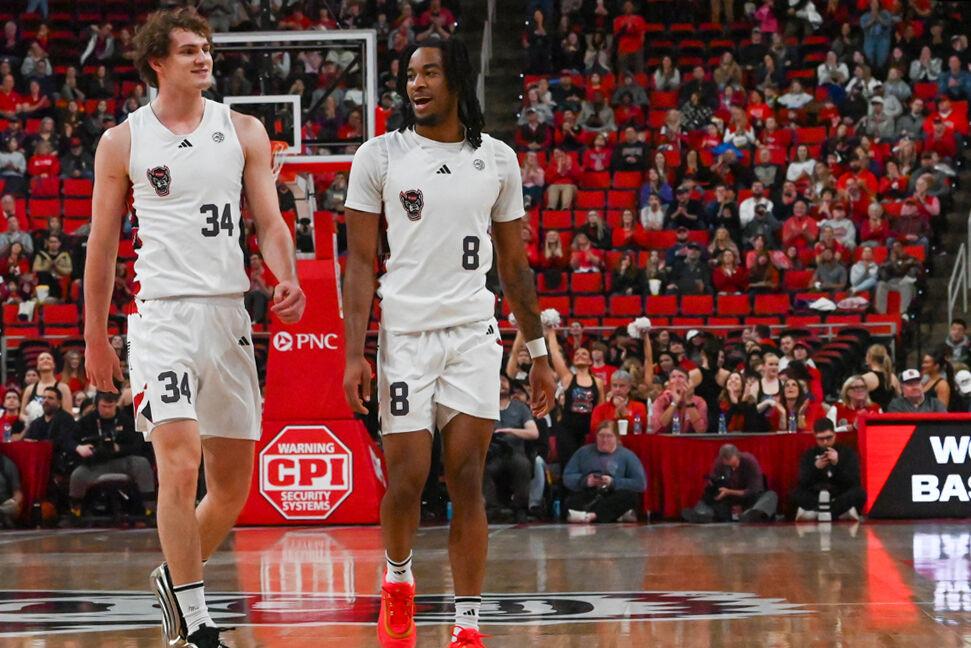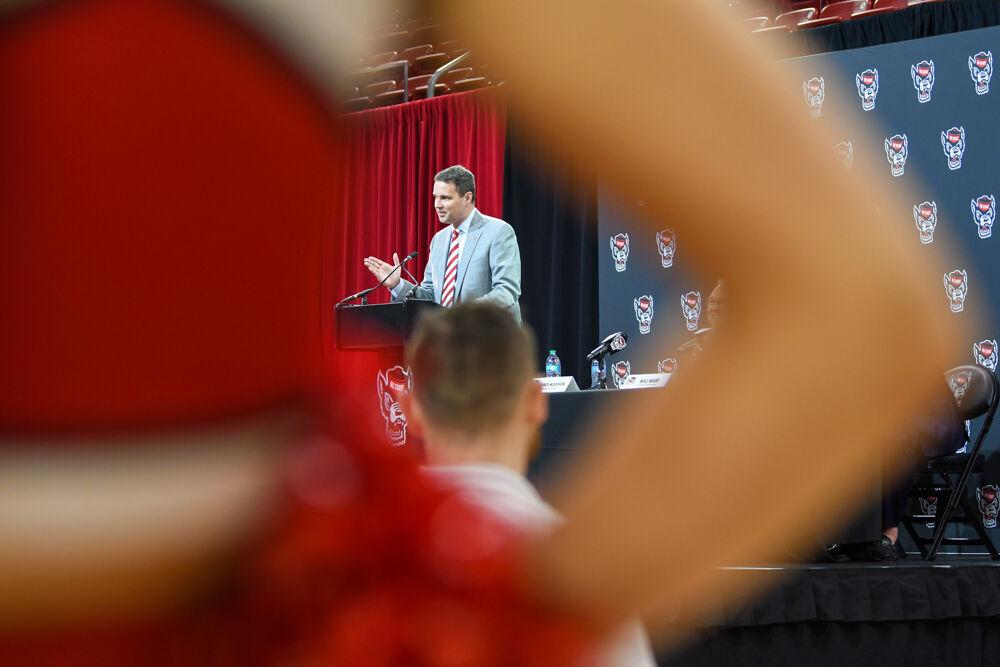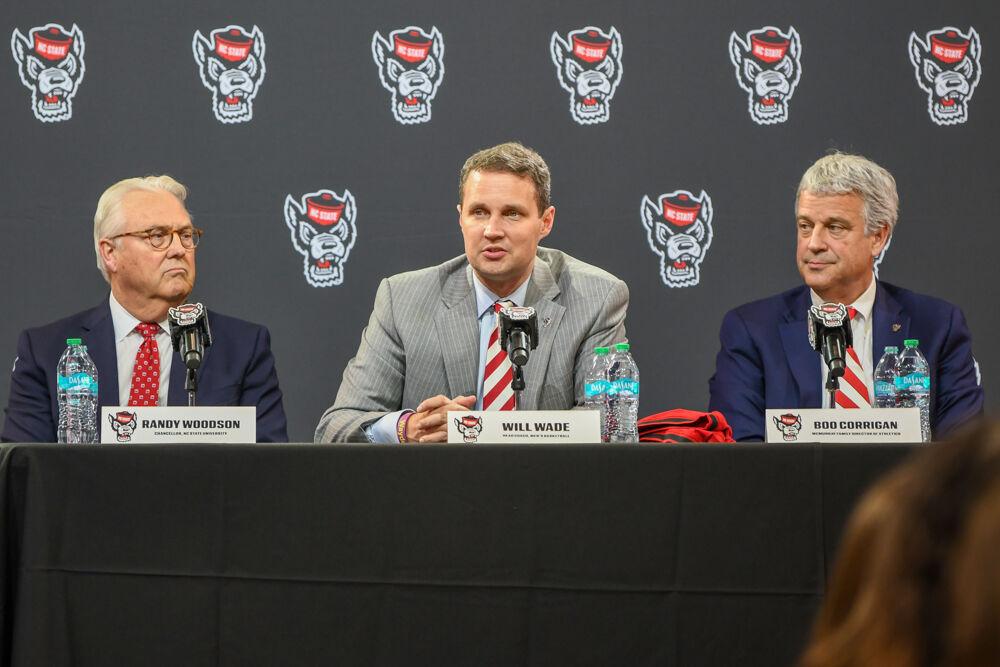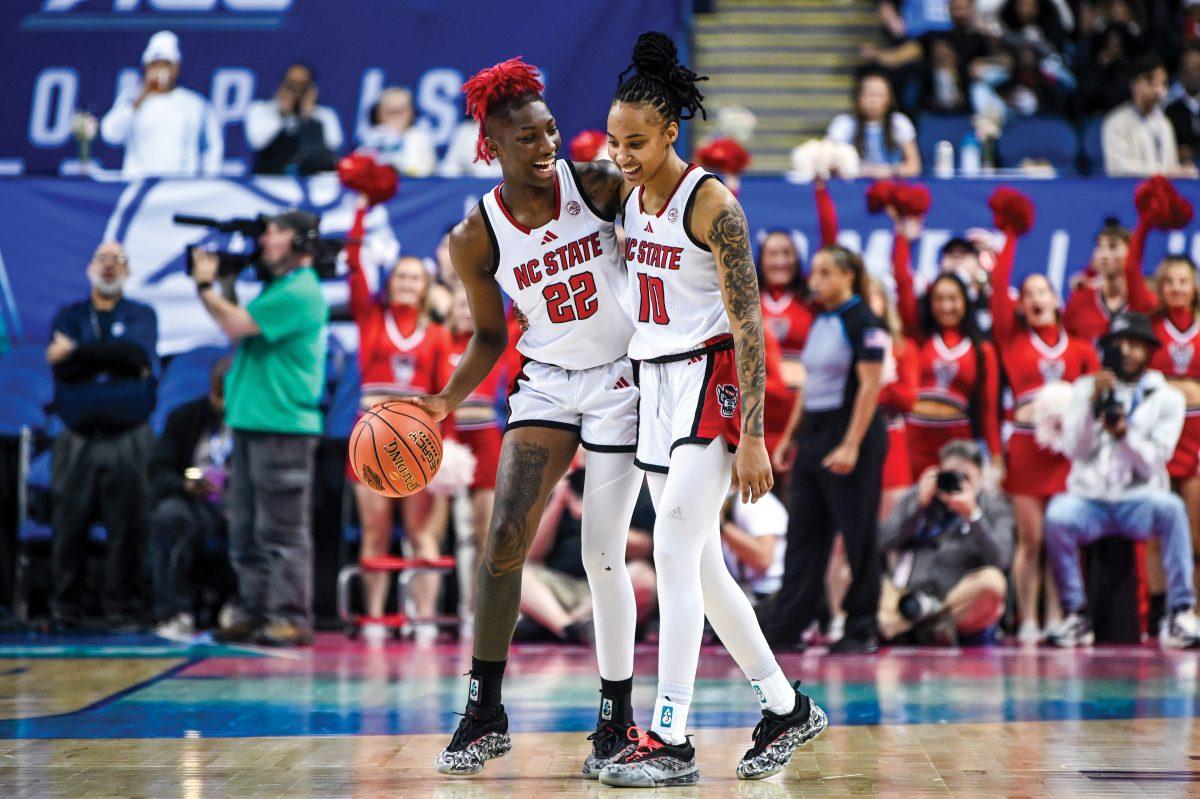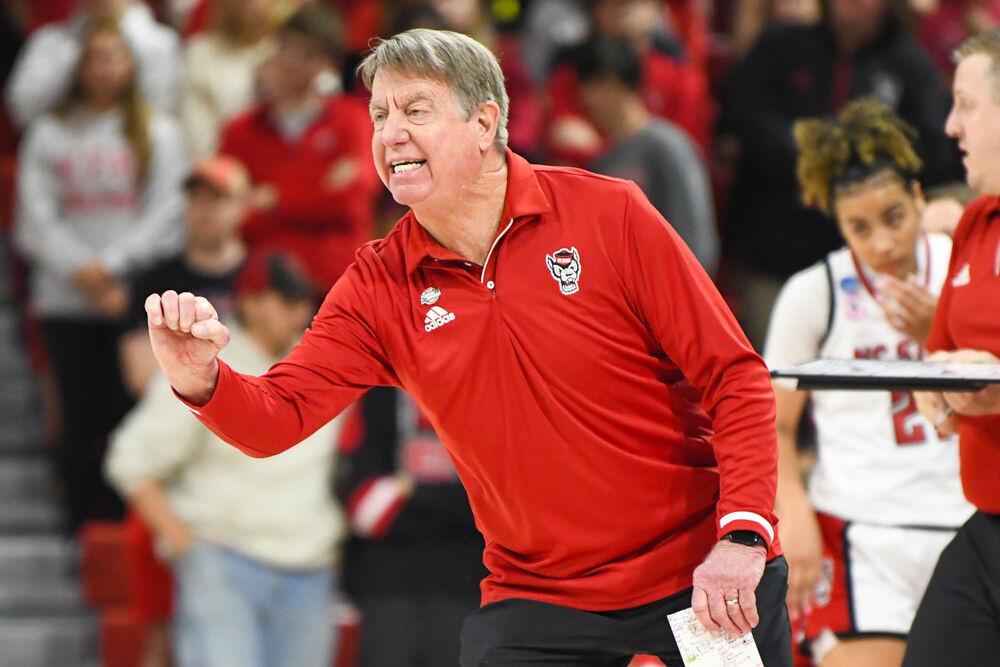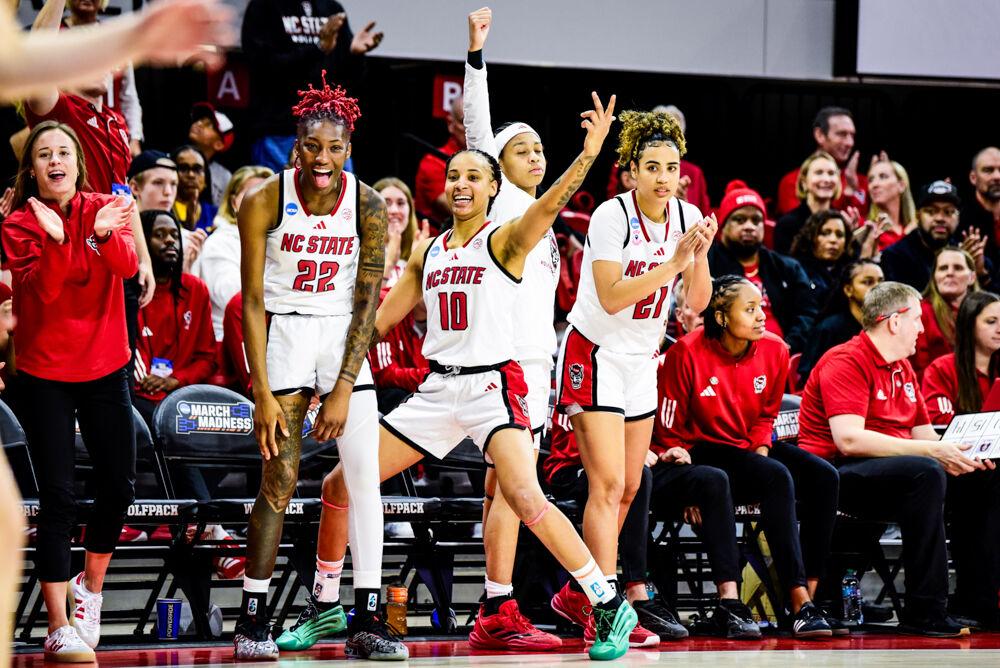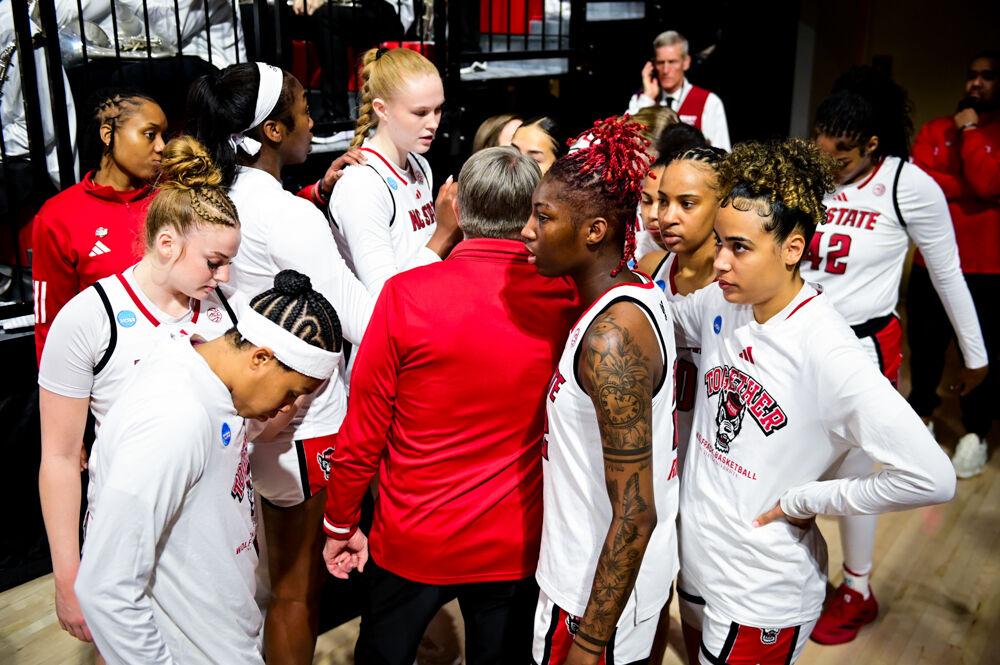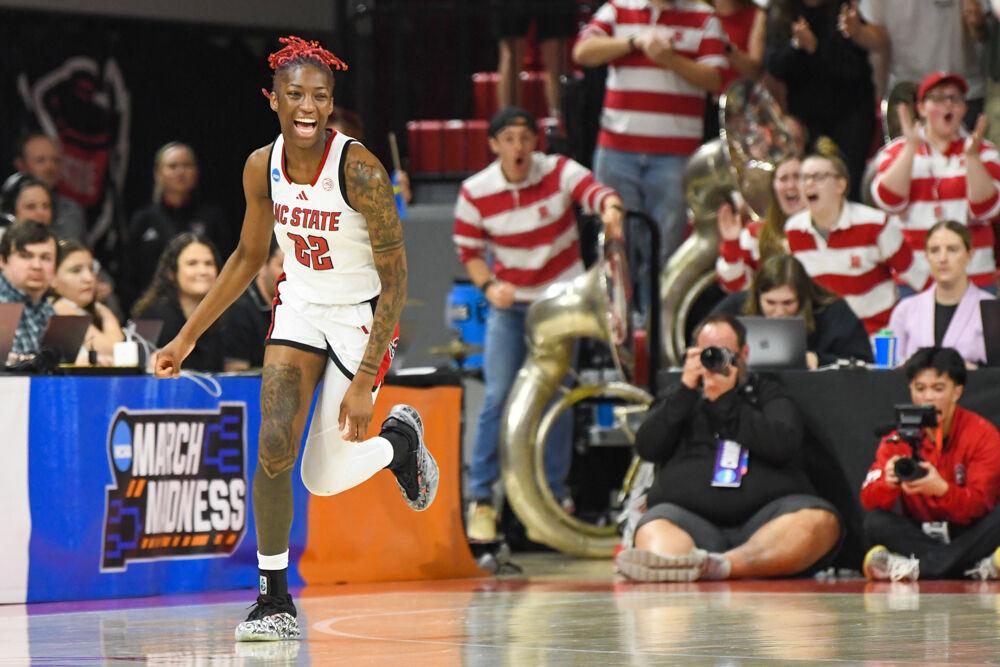Both NC State men’s and women’s basketball were a part of 18 schools that recently donned Adidas’ annual Black History Month jerseys. This year, the design featured the team’s logo on the top left corner of the uniform with the number in the middle off to the right and quilting patterns down the side of the jersey and shorts.
At first glance, it may seem like a simple design, but every detail is intentional. The layout tells a deeper story that reflects history, culture and most importantly, Black excellence.
“If you don’t know the storytelling and the history behind it, or you don’t care to do the research, then a lot of it could go over your head, especially the layout and everything of the jersey, that being really deliberate, not just a design element,” said Alex Taylor, the creative director and storyteller behind the uniforms.
Quilting has been a cornerstone of the African American experience as a powerful medium for cultural expression and storytelling. It was important for Taylor to highlight this aspect of Black culture in her design.
In the United States, quilting originated in Gee’s Bend, Alabama where enslaved women in the 1800s crafted them to keep warm in unheated shacks. Over time, these quilts took on a deeper purpose as they were designed to help those in the Underground Railroad.
“People who were sewing these things would sew clues, would sew maps, would sew all of these different signifiers into these quilts to be able to share with other people but in a really covert way,” Taylor said.
Unintentionally, the enslaved women of Gee’s Bend created abstract designs with scraps of fabric and clothing that eventually became a distinct American art form. Gee’s Bend quilts have been exhibited in museums across the country, and the U.S. Postal Service has issued commemorative stamps with images of these quilts. Inspired by the patterns that originated in Gee’s Bend, Taylor incorporated similar quilting motifs to pay homage to the women of the small town in Alabama.
“The collection is a celebration of Black history, and the quilted patterns, in particular, are meant to highlight that and shed light on the powerful medium of cultural expression that has emerged from African American culture, one of the many art forms that have emerged from African American culture,” Taylor said.
The front layout of the uniform with the offset logos and numbers is meant to replicate the jersey Lusia Harris wore at Delta State University. Harris won three consecutive national titles at the university and is the only woman to have been officially drafted into the NBA. She was also a member of Team USA’s first women’s basketball squad and became the first female Olympian to score a basket. After her career, Harris became the first Black woman to be inducted into the Naismith Memorial Basketball Hall of Fame.
“She was a woman in a man’s world,” Taylor said. “She has an incredible legacy because she really was someone who spearheaded the game for so many women. The WNBA would not exist without her story and her pioneering in the beginning.”
For Taylor, honoring Harris is especially meaningful. Taylor is the founder of Hoop York City, a brand and collective that’s created a safe space and community for women to play basketball without having to worry about getting overrun by men in New York City.
“I think that what I represent and my values and what I’ve created with Hoop York City, this is the perfect representation that sort of brings my culture and my background in design and my love of sport, sort of all to the forefront,” Taylor said. “To be able to have this one project that really commemorates all of those different elements, different pillars in my life and career, it’s invaluable.”
Once the players learned about the thoughtful design and cultural elements of the uniforms, it resonated deeply when they put them on.
“As we wear this jersey we not only honor the past but commit to empowering the future, uniting the Black community in basketball and beyond,” said Washington women’s basketball player Sayvia Sellers.
Going forward, Taylor wants to continue to implement storytelling in her designs and this project has her “wheels turning” on how she could do that next. She believes it’s imperative for brands to tell the history of the United States, especially Black history to ensure stories like Harris’ and the origins of quilting are not forgotten.
“I think that brands as big as Adidas should always prioritize these moments and the storytelling,” Taylor said. “It’s so important, especially now, to keep those memories and commemorate the history.”


